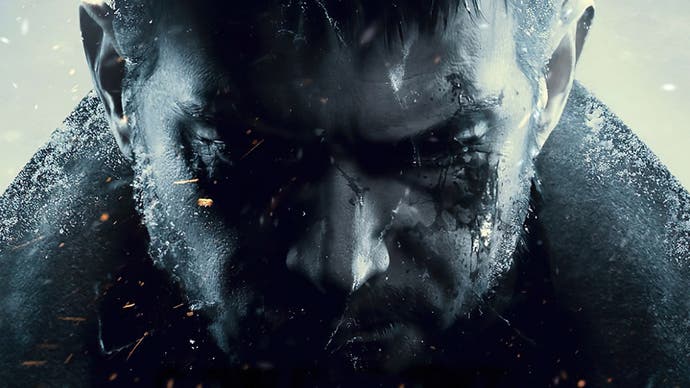Resident Evil Village tech review: Capcom transitions beautifully to next-gen
RE Engineering.
Resident Evil Village has arrived and while the various demos over the last few weeks gave us a chance to sample the technology, we've now played through the entire game and have had a chance to fully process it. As a sequel to Resident Evil 7, this game retains the first-person perspective but with some key improvements. It's also a remarkable showcase for the excellent RE Engine, with image quality, performance and ray tracing enhancements for the next generation of consoles combined with a dramatic boost in scale and scene complexity across the board.
This is what stands out the most to my eye - every scene feels carefully pieced together in a beautiful marriage of art and technology. Yes, the RE Engine powers the game but it's the art team within Capcom that really steals the show. All areas are carefully crafted with an eye towards overall scene composition above all else. In exterior scenes, the distant background lends the world a sense of scale, mid-field objects are placed in a way to connect the background to the foreground and that foreground is packed with fine detail.
There's also the sense that every surface is bespoke, with a huge variety in texture detail. Capcom's latest does a great job of delivering both an exceptional sense of scale but also near-field detail. Every angle of every frame feels fully considered which is quite a feat given the first-person, exploratory nature of the game. The only catch? Actual texture detail at close-up range can disappoint, but juxtaposed against RE7, I still feel there's a significant improvement overall. As a first-person game then, another key element is body awareness - essentially, how well the camera and virtual body work in tandem. If the act of moving and shooting feels poor, the illusion can fall apart. In that sense, I feel Capcom has done an excellent job - from the gentle bobbing of the camera to swaying of your pistol, basic movement looks and feels excellent. Look down and you'll see your feet: the player shadow is projected from this model which you control. It's especially effective when standing within an area that's lit volumetrically.
Speaking of which, lighting in general is used exceptionally well. Outdoors, Capcom uses volumetric fog and lighting to great effect while indoors, a mix of direct and indirect lighting sets the mood. The way light spills in through windows, gently lighting the room is very effective. The mix of volumetrics, subtle indirect lighting and physically-based materials are absolutely critical to achieving a realistic, natural appearance, especially during the game's signature overcast, gloomy moments. Once you start playing in this space, however, there are some mixed results to note. Ambient animation is used for things like trees, which sway gently in the breeze, torches and streams of water but the interactivity is generally kept to a minimum. That is, most of the breakable objects are designated as interactive items but if you just walk along unloading on random barrels or pottery, most of the time, they won't react in any meaningful way. So, in that sense, the game world can feel a little static - par for the course with this series, but worth noting.
Of course, while most of your time is spent in first-person, Resident Evil Village is rich in characters, with a wide range of cutscenes. This brings us to our next point - character detail and animation work. Firstly, while playing the game, most cutscenes take place from the first-person perspective. I'm a big fan of this type of direction where the player camera and limbs are part of the animation sequence. Actors within the scene all centre around this player perspective and it works really well. All of this animation was seemingly captured using a performance capture setup where both facial and full-body movement data is captured and utilised to build each scene.
The game even includes a model viewer, allowing us to fully appreciate the work that's gone into the characters. All of them feature realistic skintones combined with exceptional clothing detail. The material quality is realistic and natural while the designs themselves are packed with small details including 'dangly bits' which have physics applied to them. The enemies are certainly gruesome in terms of design but how do they behave in-game? Well, I was relieved to discover that tactics introduced in Resident Evil 4 are still useful to a degree - firing at your enemies' legs, for instance, causes them to fall, slowing their progress, so location-specific attacks are still viable here. Death animations are also satisfying in a way that you would expect from the series. This entry isn't quite as action heavy as some of the third-person games, however, but there are plenty of combat-focused situations.

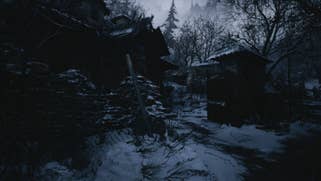


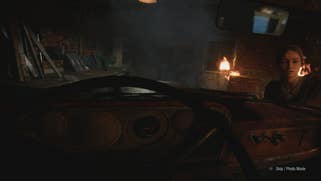

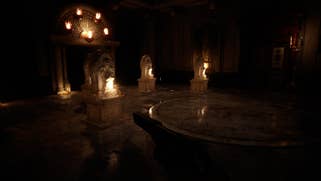
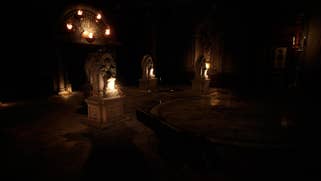
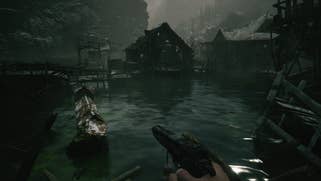
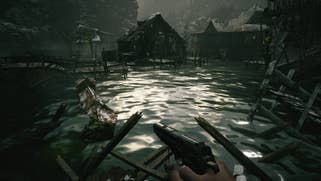
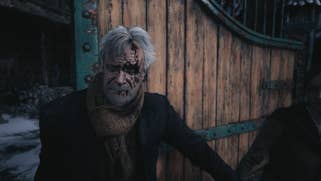

The ray tracing support (which is optional) is also intriguing. Firstly, there are the ray traced reflections. You'll find reflective materials throughout the game - from shiny floors, to individual objects to the surface of a large lake, all of which receive RT reflections. It's a welcome addition except that actual resolution is very low, perhaps as low as 1/8th of the primary rendering resolution. As a result, while beneficial, it's not a game changer. On the other hand, the inclusion of RT occlusion shadows and lighting is very nice, removing the black outline halos derived from standard screen-space solutions. RT also improves interior spaces with more realistic local bounce lighting - it can appear subtle at first glance, but it's definitely effective.
Is it worth the performance cost though? In this respect, Resident Evil Village behaves exactly the same as the demo comparison we put together a few days ago. All versions of the game target high frame-rates and run fully unlocked. PS5 and Series X spend most of the time at or near to 60fps even with RT enabled (with a small but noticeable performance lead on the Microsoft machine) but Series S has profound performance difficulties here, despite reducing resolution from a reconstructed 2160p down to 1440p. In terms of visual features, they're otherwise identical. Turning off RT brings Series S much closer to a locked 60fps, while PS5 and Series X just power through the entire game with no frame-drops whatsoever - certainly not in our testing.
Having played most of the game with RT enabled on both PS5 and Series X, the truth is, both do a great job of holding the target frame-rate. So when Capcom suggests that it's 4K45 on these machines in its marketing, the reality is much better. And yes, even when performance does dip on Series X, the system's variable refresh display support operates exactly as it should. Throughout the whole game, there's only one sequence that really causes problems - a specific lake area. The body of water here uses ray traced reflections, the scene itself is complex and there is a large enemy hunting you which can spawn lots of alpha particles. As a result, performance takes a significant hit and both drop into the 40s, with Series X pulling ahead by a small degree up against PS5. Again, disabling RT does fully resolve the issue.

But of course, frame-rate is not the only performance measurement - RE Village also highlights a difference in loading. On Xbox Series X or Series S, when you load up a save, return to the menu or begin a Mercenaries match, you're met with a relatively short loading screen followed by a button prompt. It's much shorter than Resident Evil 7 ever was but it's there. On PlayStation 5, however, loading screens are completely eliminated, replaced with a short dip to black. To all intents and purposes, it's seamless and instant: you hit load and the game begins. My guess is that they're taking full advantage of the new storage APIs on PS5 to enable such quick loading - and it's very effective here.
So PS5 has faster loading and Xbox Series X has an edge in frame-rate when using ray tracing but, honestly, both versions are extremely close to one another. It's one of the closest calls we've seen and it feels like Capcom has done justice to the two new machines. Xbox Series S is pretty good too in terms of image quality and performance, but the best route to the most satisfactory experience is to disable RT on Microsoft's junior Series machine.
Beyond the technology, I also wanted to briefly share my thoughts on the game itself. Simply put, I really enjoyed it. The introduction is a little long with a lot of scripted sequences that detract from the pace but once you reach the castle, the game unfolds beautifully. You'll visit multiple locations in and around the village that all offer a different sort of challenge - similar to Resident Evil 7. However, this time around, the village itself serves as the glue between everything and helps give the impression of a larger world. Gameplay-wise, I do recommend disabling auto aim and toying with the aiming settings in general. Once you dial it in, combat starts to feel satisfying but how much combat you'll encounter varies per area. I also enjoyed the puzzles, which are very much in line with the pillars of the series, with a focus on bringing disparate items together to unlock the path forward.
Overall, I'm a fan of what Capcom has achieved and I'm impressed with the sheer number of quality Resident Evil games Capcom has managed to deliver in recent years. It's also been great to see the RE Engine transition so well onto the new wave of consoles. The technology was seemingly built from the ground up to support high frame-rate gaming, while still delivering excellent levels of detail. The game works well enough on the last-gen systems, but with PS5 and Xbox Series consoles, you're getting the complete package and some promising ray tracing support too. Last-gen systems? Performance is wobbly on PS4 and Xbox One, but the 1080p60 performances modes on Pro and One X deliver silky smooth response. All told, I think it's safe to say that Capcom has delivered here - and from my perspective, this one is easy to recommend.
